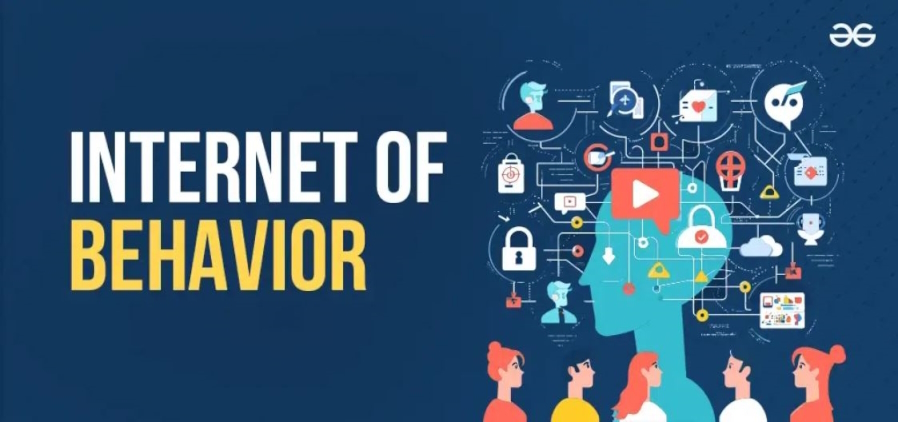
Internet of Behavior
By Karen Schumacher
Time to start minding your P’s & Q’s folks. First, we have the Internet of Things (IoT), then the Internet of Bodies (IoB), and of course Internet of Medical Things (IoMT) among others. But now, it is time to learn about the monitoring of your behavior to manipulate and ensure you are falling in line with all the other networking and “connectivity” to the internet.
“Internet of Behavior (IoB) uses technologies like big data analytics, artificial intelligence (AI), and the Internet of Things (IoT) to analyze and interpret behavioral data.” The “convergence of Internet of Things (IoT) and Artificial Intelligence (AI) technologies has given rise to the Internet of Behaviors (IoB)”.
IoB is also defined as consisting “of a combination of the Internet of Things, behavioral science, and data analytics, with the aim of collecting data relevant to individual behavior and thought patterns. This data then undergoes an analysis to discover insight about behavior, before using the insight for various purposes, such as improving marketing campaigns or medical monitoring for patients.” Out here in the real world this is called predatory, unethical, and manipulative activity.
Regardless of definitions, the whole idea behind IoB is “collecting each digital activity data of user and finally to use this information to influence behavior.”
IoB, not to be confused with the other IoB for Bodies, is a point of interest for corporations to discern how the employee can be exploited further for corporate benefit. Areas for IoB snooping on employees includes work patterns, health, data access, and monitoring for external user abnormal behavior.
Corporations can also use customer IoB in order to determine “how to influence behavior patterns” that will provide a “significant advantage over competitors” for profit. Personalized marketing campaigns from collected data can potentially bring high returns on investments.
A behavior could be given its own address for tracking. Sources for this data and tracking could include social media, IoT data through sensors and cameras, spending habits, user locations, interactions with customer support, and biometric data. Better get that scowl off your face. This data can then be integrated into other software.
But IoB can also be used to influence other behavior like driving too fast. That data can be transmitted to a central system which can then generate a warning that tells the driver to slow down.
The same “IoB systems that influence employee behavior can be used to impact purchasing behavior”, or used by the government “to influence their constituents.” Other IoB areas include YouTube which uses “behavior data analytics to improve the user experience and recommend videos with greater accuracy”. Custom web pages can be created for individuals “based on their behavior”. Because of tracking customer locations, companies can send personal notifications when in the customer is in that location again. Home isn’t even safe with behavior tracking through Alexa, Google Home, and Siri.
With those wearable medical devices data is being gathered to measure response to treatments and spying on habits that affect health. Better not indulge in that daily nightcap. And that airport is tracking your behavior as well.
This IoB surveillance and spying in retail, health, and travel can also be found in entertainment, finance, and education.
According to the AI-Powered Tool, Gartner, “40% of the global population will be subject to at least one IoB program (whether government-run or commercial) and digitally tracked to influence their behavior” by 2025. The thought is that these “IoB apps and systems will continue to proliferate, regardless of data privacy concerns.”
All of this bill of goods is being sold as a positive to the oblivious with having a more personalized experience and improved security. Alarmingly, people are blindly embracing it.
This gathering of personal data will lead up to the Internet of Intelligence (IoI) which “allows users to engage directly with intelligence capabilities. You just ask and it does things for you.” One just needs to input information on a problem they want solved, and poof, AI uses that and “extensive personal information” to create the solution. AI agents and other tools are used for the answer. So vast are these agents and collaborations with each other, a new “AI Society” is forming.
It is apparent that IoB, and massive surveillance systems, have already been forced onto everyone. Without thinking about its implications, people have embraced technologies that have made it possible “to monitor, control and model human behavior”. Who can be contacted to have this surveillance and manipulation system extracted from your life? It is technocratic control; there is no one to go to because the nefarious activities are silent and hidden behind devices. Tossing the devices means stopping the surveillance, at least some of it.
IoB isn’t just for influencing behavior, the goal is control over society with decisions made by algorithms and technocrats. With IoI, there will be further loss of critical thinking by humans.
It is difficult to find words that fully describe humans that are behind this advancing train wreck. How could any human participate in a concept that clearly holds such dangers to mankind? The mere fact that this technology is being integrated without any human permission is far more egregious than what any prior tyrant has laid upon the world, except that now there is not one tyrant, but many hidden ones.
Knowing and understanding that this level of surveillance for manipulation is currently being executed should cause everyone to rise in objection. One can live without this technology in their lives. Ready to dump Facebook and get rid of that smart phone and its apps as a start?